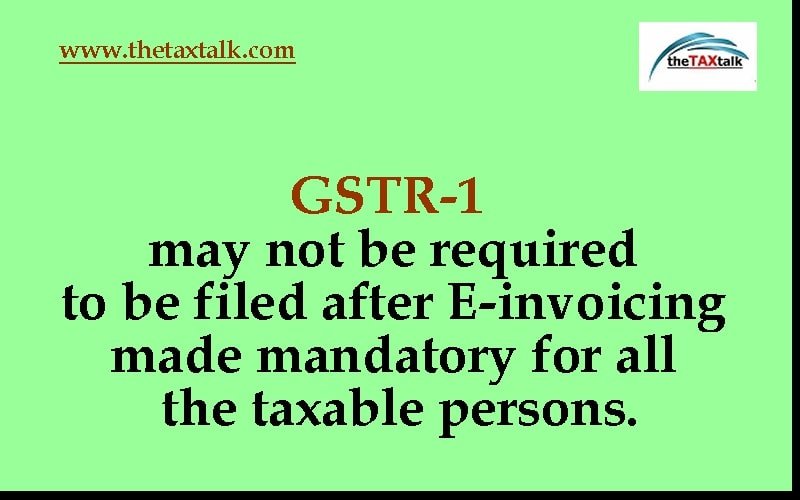![]()
GSTR-1 may not be required to be filed after E-invoicing made mandatory for all the taxable persons.
The Government believes that the only mechanism to control the fake invoice or unorganized sector appears to be through e – invoice or e-billing mechanism. The incidents of fake invoices has made a remarkable shocking revelation in the recents past after the GST implementation. One may note that the fake Input Tax Credit (ITC) of over INR 50,000 crore has been detected in the past few years.
To further ensure better compliance and plug leakages, the GST e-invoicing is expected to be mandatory for firms having turnover of INR 5 crores from January 1st, 2023, as per the Chairman of Central Board of Indirect Taxes Mr. Vivek Johri.
The reduction of the threshold of the GST E invoicing to over Rs. 5cr will provide the department with fine data for policy making. By bringing down the e-invoicing requirement from the current Rs. 20cr to Rs. 5cr, the government can further make analysis of the following factors:
1. The nature of goods purchased and sold by the dealer
- Which are the sectors making and not making contribution to the GST.
- Which sectors are there with probable revenue leakages.
- Which sector can contribute higher GST revenue.
- Which sectors are still unorganized from the GST perspective.
- Cases of blocked Credit availment by the purchaser like vehicle, immoveable property, etc
One may note that the fake Input Tax Credit (ITC) of over INR 50,000 crore has been detected in the past few years. The authorities will be able to make better analysis of the trends and the availability of the ITC, and therefore to remove the fake ITC claims.
It may be recalled that during the introduction of the e-invoicing (for B2B Transactions, from Oct 1st, 2020) the threshold was kept at over INR 500 crores. In the second phase, from January 1st, 2021 the threshold was brought down to INR 100 crores & in the third phase (April 1st, 2021) the mandatory threshold came down to INR 50 crores. The current applicability of the e-invoicing is INR 20 crores (From April 1st, 2022). The same is now proposed to be reduced to Rs. 5 Cr.
The trend may be continued even after and there may be a time where e-invoicing would be made mandatory irrespective of the turnover of the dealer. Once one can construct all the returns based on e-invoices, the need for invoice matching itself goes away and yet have a fool proof system of return filing. If e-invoicing is mandatory in all the cases without any limit then the filing of GSTR-1 may be done away as all the information would be there by way of e-invoicing. This would surely reduce the compliance burden of filing GSTR-1.


